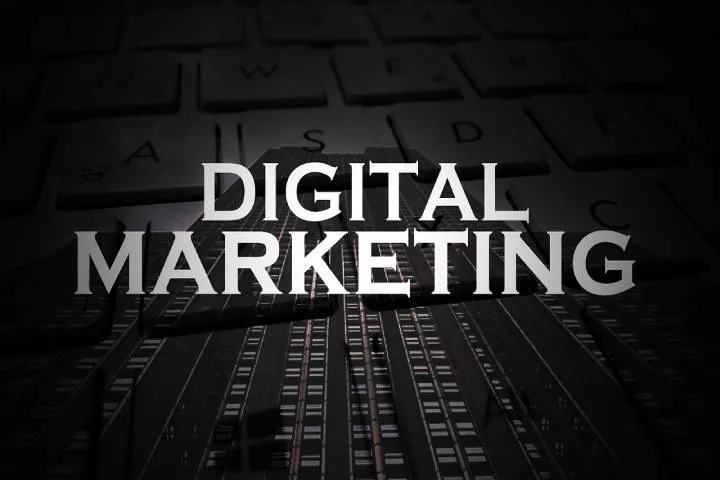Big Data
Benefits of Data analytics for Your Business
One of the most significant benefits of Big Data analytics is that businesses can now deliver personalized experiences at scale.

Data Analytics provides the path for creative solutions, hyper-targeted promotional techniques, and personalized promotional strategies by allowing you to define your consumer clearly. The potential advantages of participating in Big Data analytics are well understood: these technologies offer cost reductions, increased productivity, and an enhanced decision-making process.
According to research, 90 percent of collaborating enterprise clients stated that data and analytics are critical to their company’s digital development objectives. Students are opting for data analytics courses to join this dynamic industry and be a part of the future driven by advanced technologies and innovations. There are distinct benefits to adopting data analytics into your organization since it generates effective results, like the ones listed below:
Table of Contents
1. Better Decision-Making:
One of the most significant advantages of Big Data analytics greatly enhances decision-making procedures. Businesses are progressively turning to data before making decisions instead of depending solely on intuition. Businesses are better positioned to produce accurate forecasts when big data combines AI, machine learning, and data mining.
In essence, you’re streamlining what was formerly a years-long collection of knowledge and relying on technology to achieve results swiftly and with less experimentation. Another important use is categorization utilizing AI-analytics methods.
2. Personalization:
The performance indicator that most advertising agencies aspire for is to provide a personalized experience. As a result, one of the most significant benefits of Big Data analytics is that businesses can now deliver personalized experiences at scale.
Big Data fuels prediction engines and pricing optimization, and it gives businesses a complete picture of their customers, allowing them to customize to each person.

3. Predictive Modeling:
Organizations may use predictive modeling to determine what’s causing problems and anticipate future results. Predictive analytics technologies are used in financial services to assess fraud threats and establish trustworthiness.
These technologies are also being used to assist climate warming and sustainability policies, nuclear power, oil exploration, and other topics.
4. Retention and Loyalty:
According to Market experts, the major accelerators for improving sales and customer fulfillment are social networking site promotion, email marketing, and behavioral studies. Social media management, website analytics, behavioral data, and competitive analysis are all used to assist organizations in figuring out what their customers want.
5. Forecasting:
Marketers can forecast customer experience and outcomes more precisely using Big Data analytics mixed with statistical approaches and historical information. They can then use the information to develop long-term plans.
6. Optimized Messaging and Solutions:
Data analytics can determine what clients want and how they respond to communications and then integrate those findings into promotional, production, and sales tactics.
7. Accurate Measure of Campaign ROI:
For marketers, attribution has always been a difficult task. Advanced analytics technologies can assess the effectiveness of all campaigns, messages, and techniques that contribute significantly to a customer’s conversion.
These findings provide a platform for future operations for businesses. Companies can also use the information to make better financial planning decisions.
8. More Accessible Analytics:
By democratizing the process of creating plans and implementing the sense of the findings, AI is increasingly assisting in getting data analytics into the hands of more people. Organizations may obtain comprehensive insight into their business using self-service, intelligent solutions across all divisions.
So, if you are planning to pursue a career in data analytics, you must start by signing up for analytic data courses now!
Big Data
How To Use Histogram Charts for Business Data Visualization
One such tool for data visualization that stands out for its simplicity and effectiveness is the histogram. Keep reading to learn more about histogram charts.

Data visualization is an indispensable tool for businesses operating in the contemporary digital era. It enhances the understanding and interpretation of complex data sets, paving the way for informed decision-making. One such tool for data visualization that stands out for its simplicity and effectiveness is the histogram. Keep reading to learn more about histogram charts.
Table of Contents
1. Understanding the Basics of Business Data Visualization
Alt text: A person looking at different data visualizations on a computer before looking at a histogram chart.
Business data visualization is a multidisciplinary field merging statistical analysis and computer science fundamentals to represent complex data sets visually. It transforms raw data into visual information, making it more understandable, actionable, and useful.
Visualization tools such as histogram charts, pie charts, bar graphs, and scatter plots offer businesses a way to understand data trends, patterns, and outliers—essentially bringing data to life.
Whether you’re analyzing sales performance, forecasting market trends, or tracking key business metrics, data visualization can be a powerful tool for presenting data that might otherwise be overlooked.
2. Deciphering the Role of Histogram Charts in Data Analysis
Histogram charts are a superb tool for understanding the distribution and frequency of data. They are bar graphs where each bar represents a range of data values known as a bin or bucket. The height of each bar illustrates the number of data points that fall within each bucket.
Unlike bar graphs that compare different categories, histogram charts visually represent data distribution over a continuous interval or a particular time frame. This makes them invaluable for many business applications, including market research, financial analysis, and quality control.
By portraying large amounts of data and the frequency of data values, histogram charts provide an overview of data distribution that can aid in predicting future data trends. It helps businesses to spot patterns and anomalies that might go unnoticed in tabular data.
3. Key Steps To Create Effective Histogram Charts
Creating effective histogram charts involves steps, starting with data collection. You need to gather relevant and accurate data for the phenomenon you’re studying.

Next, you determine the bins and their intervals. Bins are data ranges, and their number depends on the level of detail you want from your histogram. It’s essential to keep bins equal in size to facilitate comparison.
Once you’ve structured your data and decided on the number of bins, the next step is to count how many data points fall into each bin. This is the basis of your histogram.
Finally, you draw the histogram with the bins on the x-axis and the frequency on the y-axis. Each bin is represented by a bar, the height of which represents the number of data points that fall into that bin.
4. Advantages of Using Histogram Charts for Business Data Visualization
Alt text: A person on a computer looking at multiple screens with histogram charts.
Histograms offer a host of advantages in the realm of business data visualization. They provide a clear, visual summary of large data sets, making it easier to digest and comprehend the data.
Histograms are also useful in identifying outliers or anomalies in data, which can be significant in industries such as finance and quality control, where an anomaly could signify a significant issue that needs to be addressed.
5. Real-world examples of Business Data Visualization Using Histogram Charts
Many businesses use histograms to visualize data. For instance, a retail company may use histograms to analyze customer purchase patterns, enabling them to identify peak shopping times, seasonality, and trends in customer preferences.
A manufacturing company might use histogram charts to monitor product quality. By analyzing the frequency of defects, they can identify the cause of the problem and take corrective actions faster.
Histograms are also widely used in the financial industry. Financial analysts use histogram charts to visualize the distribution of investment returns, helping them to understand the risk associated with an investment.
Histogram charts are crucial in business data visualization, offering clear and concise representations of large data sets.

 Instagram3 years ago
Instagram3 years agoBuy IG likes and buy organic Instagram followers: where to buy them and how?

 Instagram3 years ago
Instagram3 years ago100% Genuine Instagram Followers & Likes with Guaranteed Tool

 Business5 years ago
Business5 years ago7 Must Have Digital Marketing Tools For Your Small Businesses

 Instagram4 years ago
Instagram4 years agoInstagram Followers And Likes – Online Social Media Platform





















